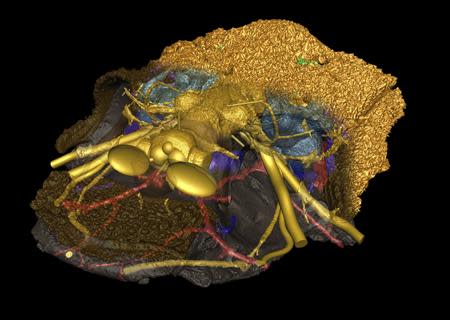 |
| Lampreys are the most primitive vertebrates on the planet and lack jaws. |
The simplest animals with a backbone are hagfish and lampreys, rather vile creatures which live at the bottom of oceans or streams, using their jawless, sucker mouths to feed on rotten flesh. All other vertebrates possess jaws.
Some are incredibly basic, little more than a flap of bone designed to crush and grip. Others are engineering marvels: snakes can open their jaws nearly 180 degrees, a feat unrivalled by any other creature in the animal kingdom.
From the embryo we can track the development of the jaw from a simple bud of cells to a fully formed organ with teeth, ossified tissue and an array of muscles and tendons. Indeed there is a distinctive, developmental pathway. In jawless vertebrates tissue grows forward on either side of the brain, meeting in the middle to create an upper lip surrounding a single mid-line "nostril" which lies just in front of the eyes. In jawed vertebrates, this same tissue grows forward in the mid-line under the brain, pushing between the left and right nasal sack, opening to the outside. The front part of the brain is also much longer in jawed vertebrates, with the result that our nose is positioned at the front of the face rather than back between our eyes.
 |
| The 410 million year old skull of Romundina from Arctic Canada |
The research team, led by Vincent Dupret from Uppsala University, took the skull of Romundia to the ESRF or European Synchrotron Radiation Facility in Switzerland.
The ESRF is a particle accelerator which can generate x rays so powerful that it can penetrate solid rock. It has been used to study fossils at the highest possible precision level, revealing details on the micrometre scale. 'Without the intense X-rays produced at the ESRF, we would not have been able to create a virtual representation of the internal structures of the skull,' said Sophie Sanchez from ESRF. The analysis revealed that Romundina had separate left and right nostrils, but they sat far back, behind an upper lip, as in jawless vertebrates.
 |
| The synchrotron reconstruction of Romundina |
This mix of primitive jawless and complex jawed characteristics allowed the researchers to place this odd fish neatly between the two. While Romundina is not our evolutionary ancestor, it does pre-figure the structural development of the jaw.
The evolution of the jaw was one of the most significant events in vertebrate natural history. While its initial purpose was undoubtedly simple, most likely to help pump water through the gills, over time it became an efficient means of feeding. By lining the jaw with teeth, vertebrates could gain purchase on their prey, turning a rather innocuous structure into one of the most effective weapons in the evolutionary arms race. Romundina shows us where this biological transition began.